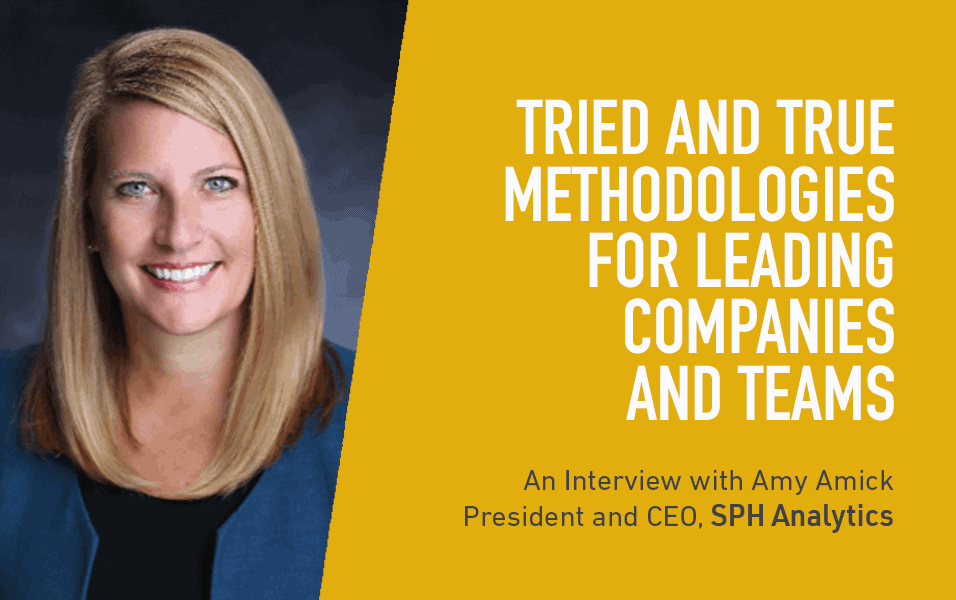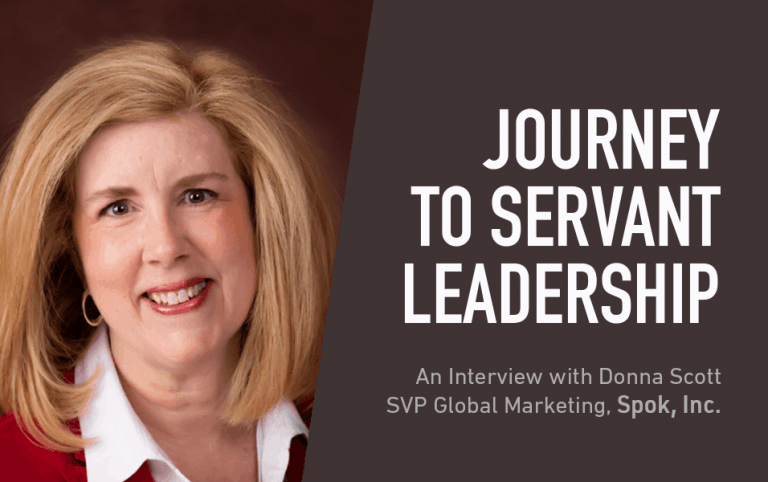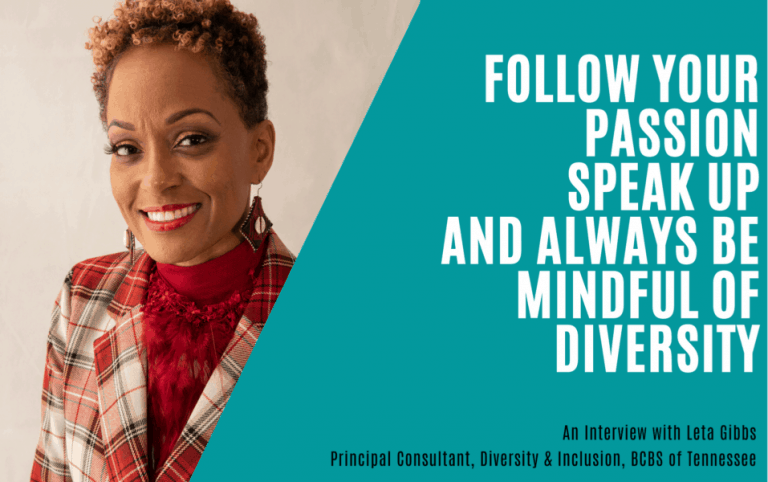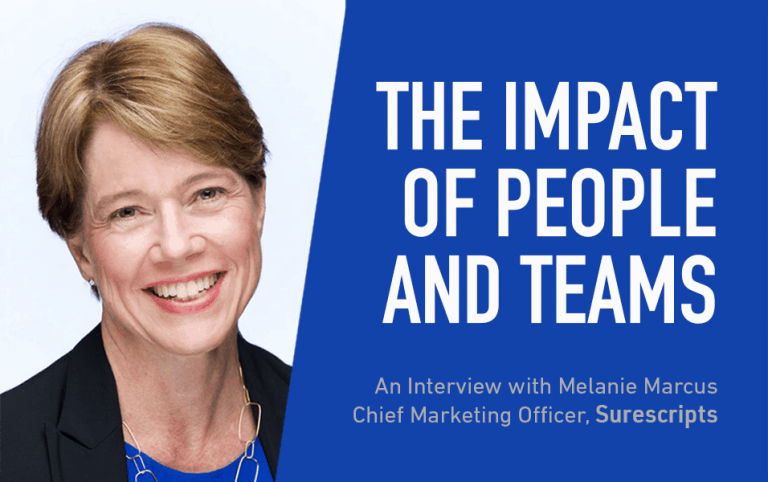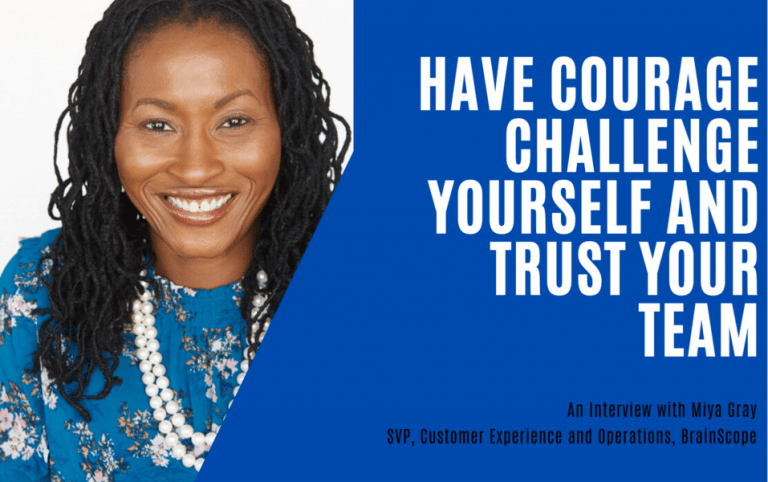Tried and True Methodologies for Leading Companies and Teams
[et_pb_section fb_built=”1″ admin_label=”section” _builder_version=”3.22″ custom_padding=”30px|0px|30px|0px|false|false”][et_pb_row admin_label=”row” _builder_version=”3.25″ background_size=”initial” background_position=”top_left” background_repeat=”repeat” custom_padding=”2px|0px|0|0px|false|false”][et_pb_column type=”4_4″ _builder_version=”3.25″ custom_padding=”|||” custom_padding__hover=”|||”][et_pb_text admin_label=”Text” _builder_version=”4.0.9″ header_4_font_size=”15px” header_4_line_height=”1.4em” background_size=”initial” background_position=”top_left” background_repeat=”repeat”]
Tried and True Methodologies for Leading Companies and Teams
An Interview with Amy Amick, President, and CEO, SPH Analytics
Last month I had the opportunity to speak with Amy Amick, president, and chief executive officer of SPH Analytics based in Alpharetta, Georgia. Amy is a talented change agent and has an extensive executive track record in the healthcare market-leading company turn arounds. She shared some of her tried and true methodologies for leading companies and leading teams, as well as her opinion about the state of healthcare in the U.S., from her point of view as a self-described patriot. (8 min read)
To start, tell us a little bit about your career path and what led you to where you are today.
For undergrad, I went to the University of Richmond where I earned a degree in leadership studies and political science. Richmond had the first leadership studies collegiate major in the United States, and I was fortunate to be a part of the first class to graduate with this unique major. It was a very different curriculum that replicated what you would see in a business or in real-life scenarios. Out of that, I jumped into my professional career and my first job. The first position was with Owens & Minor, which brought me into healthcare where I have spent almost my entire career. Owens & Minor is a distributor of medical and surgical supplies, and I moved up quickly to a project management role for software deployment.
That was the start of my roles in leading change and ignited my passion for that, so the next three or four roles I had were centered around consulting, project management, and driving change in organizations. Northwestern’s Kellogg School of Management is where I got my MBA, after which I joined Cerner. Early during my tenure at Cerner, I was part of a team to help change the game from lengthy, expensive implementations to more nimble, low-cost implementations of Electronic Medical Records. It was an awesome opportunity and led to my first couple of executive leadership positions. At Cerner, I was able to develop my strong operational capabilities, always with a keen focus on the client experience and the ability to create impact.
I took my first career risk when I left Cerner to go to a company called Misys, which was at that time a struggling revenue cycle company that had fallen a bit behind the times. I had the opportunity to work directly for our CEO and be part of an executive suite; they needed thought-leaders to come in and help turn things around. It was worth taking that career risk because it gave me an opportunity to push myself harder and see what kind of value I could create when given more autonomy, responsibility and, quite frankly, pressure. That turned into a series of five or six roles that I’ve now held where I have come into organizations that have not been operating at their potential, and I helped as a member of the executive team or as the leader of the company to drive rapid improvement.
It’s an interesting progression that you describe because all of your roles in a sense were projects, but with each one the project was bigger, or the impact that you needed to make was greater. Looking back at your first management role and where you are now, where have you changed the most? And what about your leadership style has remained the same?
I take very seriously the responsibility of a leader for what I call “human capital.” Everything we do as a leader needs to start with people. Our people. Our team. I don’t think the amount of time or significance of weight that I place around building the team and investing in our human capital has changed at all in my 15 years as a leader, but I think that the precision by which I execute, including following my gut instincts, has become more refined from when I started as a leader to now. My methodologies have evolved. Let me give an example. I took a big role at Cerner, replacing a guy who was a really smart leader, former military, and he was just a machine.
I accepted this giant role, following a leader who was very successful and very respected. As I stepped into the role, I paused to think about my brand. And I remember at the time being incredibly grateful that my style was so different than my predecessor because it’s a lot easier to follow a great leader if your approach is different than theirs (laughs). I had a group of people reporting to me who all were candidates to have taken the role, all of whom had more experience than me. So, I started out with the mindset of really listening to the team, versus starting with my voice. I met with all of my direct reports multiple times to listen and to learn before I made any changes, to just figure out what people needed. This has evolved into my current methodology as I join any new team. I ask everyone who’s a new direct report to set up time on my calendar to talk about three things; first, to explain his/her job including how they measure their success; second, what are their blockers to success – in other words, what are the things that I can support them with; and third, where do they see their career evolving and how can I help with that. I find this a great way for me to learn about the teammate and the business, and also sets an expectation that dialog and collaboration are key to success.
This is just one of five or six different related activities I’ve built into a structured format to how I lead. I work to ensure we have a series of different dimensions related to our team that we’re consistently thinking about. As another example, I start every year with a workshop with the executive team to press ourselves on: How are we leveraging our leaders? Are they strong enough for what we need to tackle? Are we helping them grow? Are they motivated?
I learned early on the importance of measuring progress – thinking about what you’re going to do, how you perform against it and finding the gaps. Today I lead with a structured management system that leverages KPIs, helps us determine our true north, and strives to understand the root cause for our challenges. We align our operating principles around these and measure them on a regular, quantifiable basis. This inner passion to plan and measure progress has turned into a repeatable methodology that is core to how I lead.
One more thing: I use the words team and teammate all the time. I don’t reference staff, employees, colleagues, associates, or many of the other terms often used. I look at all of us as part of a team, and that is ingrained in how I operate. I love when I hear others change their vernacular to leverage these words.
You mentioned following your gut instincts; do you still rely on this and then validate your instincts with a particular methodology?
It’s really easy as a leader, or even as an individual contributor, to get caught up in everything that’s on the windshield in front of you. Neal Patterson, the founder and first CEO of Cerner, was one of my favorite mentors and although he was an incredibly different leader than me, I learned so much from him. He gave me an analogy once that I love; picture yourself in a car driving down the highway and there are three things you can look at – the bugs that are hitting the windshield, a sign coming up for the next exit or the horizon. Neal was the guy who could only see the horizon. I think it’s easy for any leader to get caught looking at the function of every day. We all have more to do in a day than time to actually do those things. It – or the bugs — can consume you; you could lose the ability to drive the change and the impact you want to do if you get too focused on the day-to-day. The best leadership teams, in my opinion, are made up with a blend of leaders who can see the bugs, see the exits and see the beauty on the horizon. We all don’t have to be great at all three, but the strength and the caliber of your leadership team (which includes being able to think and lead on all three levels) will make or break your ability to accomplish whatever it is you are focused on.
That is where I call on my gut, with my team. As a leader, I need to ensure we have the right teammates in the right roles. I’ve always been effective at determining whether someone is the right leader for a role, looking at both ‘what’ they do and ‘how’ they do it. I listen to my instincts, but then discern and take action using methodology for promoting, moving or even removing someone, if necessary. As a leader, one of the toughest spots for me is when my gut tells me we need to make a teammate change, yet the leader who reports to me and who directly manages the teammate does not share this view. Time and experience have taught me not to force a change; but rather to empower and trust my leaders, and to leverage a methodology that helps promote unbiased and clear talent assessment and dialog. I find that my gut is very accurate on talent, but helping leaders learn and reach those decisions with the help of experience, the inclusion of methodology, and their own instincts is a healthy way to mature and grow the team.
What are you most optimistic about?
I’m now 25 years into my career this year and 23 of them have been in healthcare. From a very big picture, I am incredibly dismayed with the “health” of healthcare in the United States. I consider myself a devout patriot – I love this country and I love the potential of this nation, and the state of healthcare in the U.S. is hurting our nation. Healthcare is just a basic thing that we should excel at, but it is so broken. I am optimistic because I think that we can make healthcare so much better. I see changes in the industry that are creating a greater opportunity and building momentum.
I am inspired and intrigued by how I believe healthcare will be ‘fixed’ in the U.S. through grassroots efforts. The high cost (and rapidly increasing cost) that individuals have to personally fund for their healthcare out of their individual pockets is creating a much more informed consumer base. This intersection between quality, price, and loyalty is a big one…well, it seems to be a big one in every industry except for healthcare. In other industries, the quality of your experience and your loyalty have a significant correlation. Healthcare isn’t like that right now. But factors are changing in healthcare, and data access combined with a consumer mindset will demand accountability and change.
I am optimistic as I know this change is coming, and I am excited to be one of those who are relentless and committed in altering this dynamic.
What personal Indulgence keeps you balanced?
Indulgence is probably not a good word for me (laughs). But tennis is a huge passion of mine. I play doubles which lets me blend time with friends, my competitive drive, and exercise into one event. I also love a nice glass of wine. And probably more than anything, my favorite indulgence is to travel with my family — my husband, my 7-year-old son, and I all love to travel. We most recently visited China and the Great Wall. Whether a trip is near or far, I love to unplug, explore new places and simply enjoy life with my family.
What do you look forward to every day?
I love helping people succeed. I go to companies where the scorecards tend to be in the red when I get there. People are losing and it’s not all that much fun. I love that I get to help change this reality.
I love that every day I get to help leaders pick the right priorities…and I get to help move noise and waste out of the way, so teammates have a greater path to success. I love when teammates shift from just walking down the halls to high-fiving in the halls because we won the deal, or we solved this problem, or we improved this process…I love to see the team excited and empowered by the change that they’re making.
And I look forward to knowing that there is always so much more we still can do.
[/et_pb_text][/et_pb_column][/et_pb_row][/et_pb_section]

